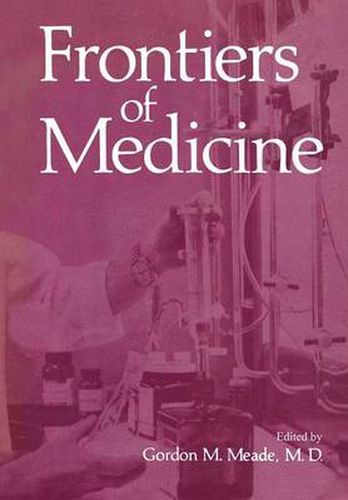Readings Newsletter
Become a Readings Member to make your shopping experience even easier.
Sign in or sign up for free!
You’re not far away from qualifying for FREE standard shipping within Australia
You’ve qualified for FREE standard shipping within Australia
The cart is loading…






This title is printed to order. This book may have been self-published. If so, we cannot guarantee the quality of the content. In the main most books will have gone through the editing process however some may not. We therefore suggest that you be aware of this before ordering this book. If in doubt check either the author or publisher’s details as we are unable to accept any returns unless they are faulty. Please contact us if you have any questions.
In September 1925 the first class of medical students was admitted to the University of Rochester School of Medicine and Dentistry. On January 4, 1926 the Strong Memorial Hospital was officially opened. The first patient was admitted the next day. On January 7th Dr. John J. Morton, Jr., newly appointed Chief of Surgery, performed the first operation. Ten days later the first baby was delivered. From these small beginnings the University of Rochester Medical Center had a steady and strong growth into the internationally renowned center of teaching, research and patient care that it is today. In recognition of its semicentennial the Medical Center con ducted a series of events during the 1975 - 76 year in which medi cal faculty and staff~ alumni, community physicians and distin guished visitors participated. This symposium on Frontiers of Medicine was a climactic event of the year’s program. The twelve outstanding physicians and scientists undertook to look forward, in selected areas of biological science and medicine, to what promise there may be for developments to come which will significantly affect mankind’s health and the quality of life. Four areas were chosen for discussion to cover the span of human life and to include aspects of it which are of vital in terest and in which significant developments now seem to be prob able in the years ahead. So far as possible the presentations sought to cover the basic science, the clinical and the sociologic aspects of each subject area.
$9.00 standard shipping within Australia
FREE standard shipping within Australia for orders over $100.00
Express & International shipping calculated at checkout
This title is printed to order. This book may have been self-published. If so, we cannot guarantee the quality of the content. In the main most books will have gone through the editing process however some may not. We therefore suggest that you be aware of this before ordering this book. If in doubt check either the author or publisher’s details as we are unable to accept any returns unless they are faulty. Please contact us if you have any questions.
In September 1925 the first class of medical students was admitted to the University of Rochester School of Medicine and Dentistry. On January 4, 1926 the Strong Memorial Hospital was officially opened. The first patient was admitted the next day. On January 7th Dr. John J. Morton, Jr., newly appointed Chief of Surgery, performed the first operation. Ten days later the first baby was delivered. From these small beginnings the University of Rochester Medical Center had a steady and strong growth into the internationally renowned center of teaching, research and patient care that it is today. In recognition of its semicentennial the Medical Center con ducted a series of events during the 1975 - 76 year in which medi cal faculty and staff~ alumni, community physicians and distin guished visitors participated. This symposium on Frontiers of Medicine was a climactic event of the year’s program. The twelve outstanding physicians and scientists undertook to look forward, in selected areas of biological science and medicine, to what promise there may be for developments to come which will significantly affect mankind’s health and the quality of life. Four areas were chosen for discussion to cover the span of human life and to include aspects of it which are of vital in terest and in which significant developments now seem to be prob able in the years ahead. So far as possible the presentations sought to cover the basic science, the clinical and the sociologic aspects of each subject area.